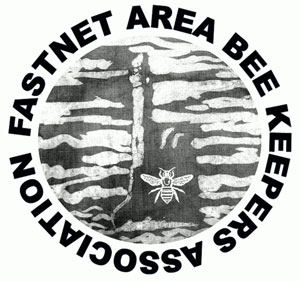See our page listing beekeeping equipment suppliers in Ireland. These suppliers are practising beekeepers themselves and can help and advise you.
Beekeeping Suit
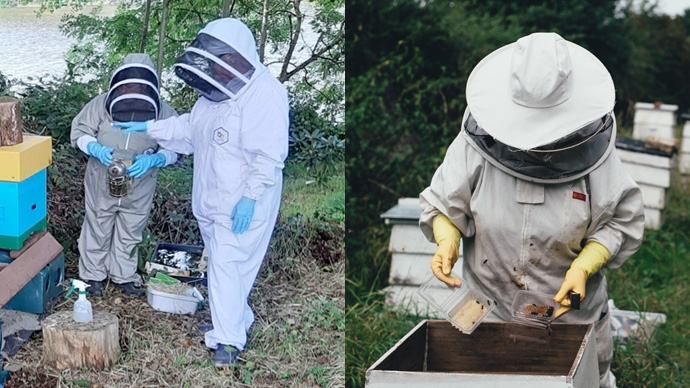
You are well-advised to research and compare prices for bee suits. Feeling safe and confident makes hive inspections much more pleasurable for both you and your bees! Look for a suit that fits your body shape and height and has elasticated wrist and leg cuffs. Longer/larger is better than something too tight. Remember, it’s not a fashion statement — it’s PPE for working with bees! Popular veil types include fencing / round and square. (I use a round veil & the boss uses a fencing type.)
Cost: Be prepared to invest in a good beesuit! Look for something around €100–120.
Wellies
Wellington boots are the essential beekeeping footwear! Living in Ireland, we’re sure you probably have a pair already.
Cost: Varies.
Gloves
Initially, you are advised to get a medium weight pair of latex gloves with attached gauntlets. Please don’t get leather gloves, as these are very difficult to keep clean and can spread disease. Make sure the gloves fit well, as baggy fingertips can get caught under frames. As you become more confident and proficient, you can use washing-up gloves or nitrile/surgical disposable gloves (tip: cotton gloves worn underneath nitriles can help with sweaty hands!), but please do wear something for hygiene purposes.
If you are totally new to beekeeping and have never been stung, it’s advisable to carry an antihistamine tablet with you just in the unlikely chance of you being highly allergic.
Cost: The blue latex gloves with attached gauntlets are usually about €15.
Hive Tool
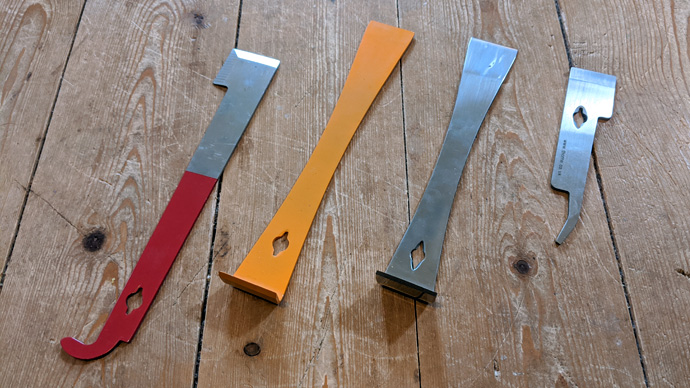
Having a steel hive tool is essential and they come in many shapes and sizes. This will be used to separate the boxes which are likely to be well stuck together with propolis (bee glue), as well as removing brace comb from lid/crown-board/frames, etc., during inspections and plenty more jobs. We recommend the ‘J’ style tool with the hooked end for beginners.
Cost: Between €5 and 10 euros.
Smoker
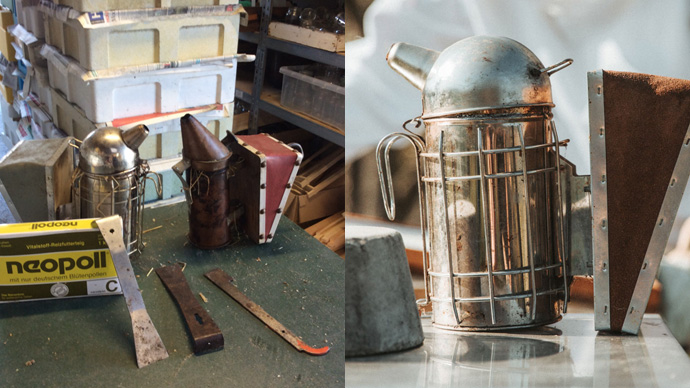
The smoker is always good to control temperament and chase bees out of the way during inspections. There is no need to spend big here once you get proficient through regular use. There certainly is no need to buy smoker fuel, because it’s everywhere around for free! We generally use dried hay. Look for a tough water spray bottle as well. It can be used to control the bees on hot days (not many of them lately, though!)
Cost: Anything from €30 to €60. They all do the same job and with care will last a lifetime.
Hive
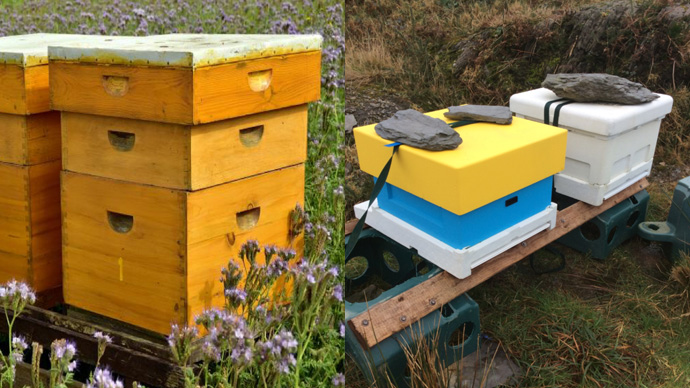
Hive type is really a personal choice but, whichever you choose and as you build up your equipment, bear in mind that it’s handy to have all the same size hive parts. The National hive (also known as the British Standard or BS National) is a wise choice because it’s the most popular type of hive in use in Ireland and the UK. These come in two types of material: wood or poly. The poly hive is becoming more popular as they are lighter to handle when full and come ready to use with no joints. Wooden hives are heavier and come made up or flat pack. Our demonstration apiary in Skibbereen uses several types of hive and gives you an opportunity to assess what suits you best.
The hive should consist of:
- Floor
- Brood box
- Queen excluder
- Super(s)
- Crown board
- Roof
Look out for the deals that include two or three supers and also include frames, so you save on initial outlay. Spare super boxes and frames are essential because if the bees are bringing in nectar from nearby, your super can fill up rapidly!
Cost: Varies.
Frames & Foundation
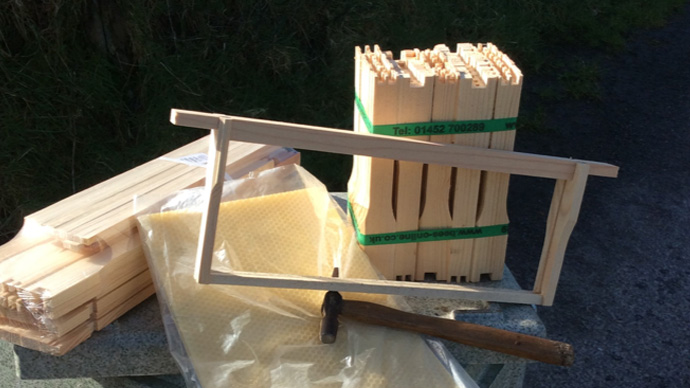
Frames come in varied types and you’ll need deep and shallow frames to fit both your brood box and your supers. We generally use Hoffman frames for both brood and super. They are sold in packs of 10 to 12. Frames of the same type (e.g., National) are cross-compatible between wood and poly.
Try to buy premium wax foundation, especially for the brood box where your queen will be laying her eggs and the frames will be handled more frequently. Always buy wired foundation for the brood box. You can buy wired or unwired for the supers. If you decide that you will harvest your honey as run honey and jar this beautiful product, use wired foundation for your supers. However, if you decide to produce cut comb honey then use unwired foundation in supers.
Cost: Varies.
Hive Stand
Hive stands protect against damp/pests and put hives at an easier height for inspection. You can buy readymade stands from suppliers, but they’re very simple to make with a few repurposed pieces of wood (e.g., pallets) and/or concrete blocks.
Cost: Free, if you’re making them yourself!
Miscellaneous Bits
Other bits you might need include:
- Crown of thorns (or similar queen catcher) for marking and clipping queens
- Queen marking pen/paint (the colour for 2021 is white)
- Pollen chart
- Bee escapes or a clearing board*
- Tie-down/ratchet straps to secure hives in windy conditions
* These escape apparatuses are used to ‘clear’ worker bees from the honey supers, thus allowing you to remove the super box to harvest the honey. They work by allowing the bees access down to the brood chamber and out, but do not allow the bees to travel up to the super again. Porter bee escapes are cheap and fit into the holes on most crown boards.
Cost: Varies
Honey Extracting Equipment
This does not have to cost a fortune, as you can use a basin for uncapping, an uncapping fork or bread knife for taking off the full comb cappings, and a simple muslin cloth for draining the honey out of the comb.
Extractors can be expensive, and we would advise you to only invest in one once you are very certain this hobby will be part of your life – a small manual extractor can cost 300 euro and above! Our association has a three frame manual extractor which our FABKA members can hire to extract their honey.
Cost: Varies.
Important: Equipment Hygiene
Bee diseases get a lot more attention now, which is a good thing because of the colossal losses encountered through the years that diminished stocks big time! So, wash your hive tool and gloves between hive visits. Hygiene in all your bee care activities can help minimise the spread of bee diseases.
Prev: Getting Started
